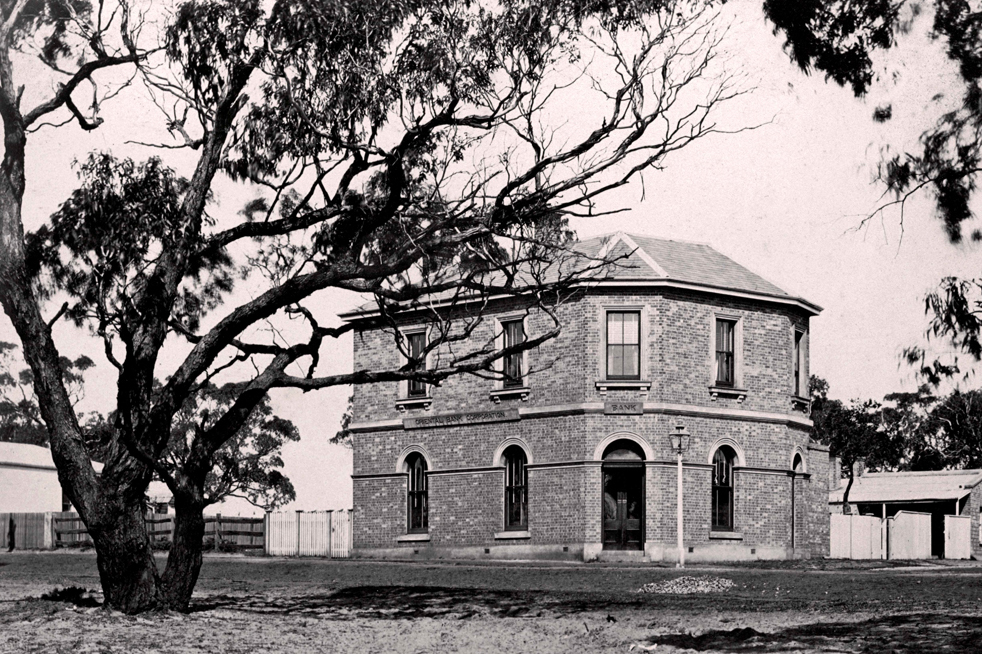
By Val Wilson (Mornington and District Historical Society) and Peter McCullough
The conversation above is one that might have been overheard in Main Street, Mornington, circa 1875, when the Oriental Bank established itself in a building on the corner of Main and Albert Streets; it was the town’s first bank.
The Building
Pioneer resident Thomas Allchin constructed the building from bricks made from material extracted from his clay pit on the lower corner of his Sutton Grange Estate. The pit was located in Gordon Street, to the rear of what has become the Mornington Central shopping centre.
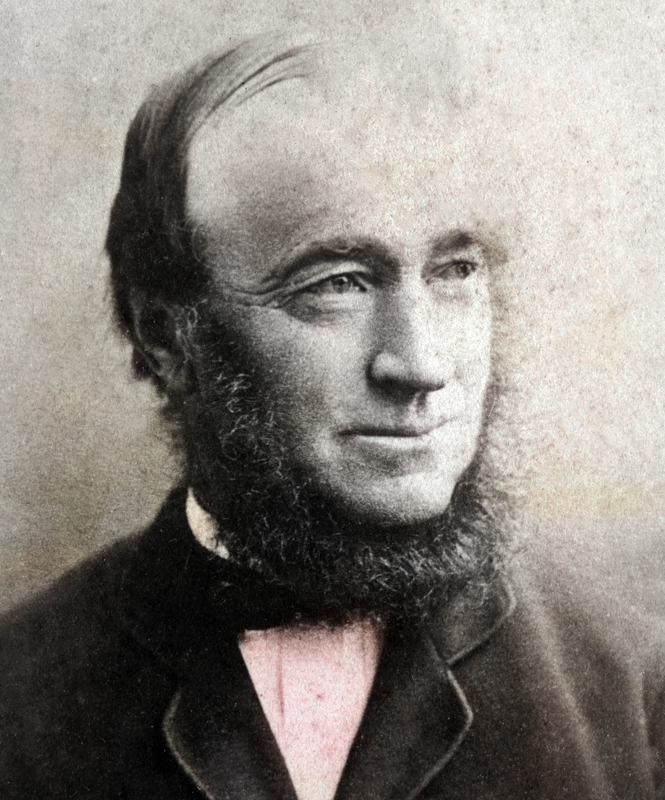
Allchin leased his impressive building to the Oriental Bank (1) which traded there from 1875 to 1880. It was then taken over by the Colonial Bank (2) which occupied the building until 1894 when it moved to premises on the other side of Main Street.
Over the past 130 years the building has housed a variety of retail premises including Herb Dickinson’s The Point furnishing store in 1923 and then The Point hardware store for many years after that. Today the occupants are an eclectic mix: one can enjoy a Subway at the lower level and then slip upstairs for a Brazilian wax! The building reveals little of its former appearance except for the characteristic splayed corner and rectangular upper level double hung windows.
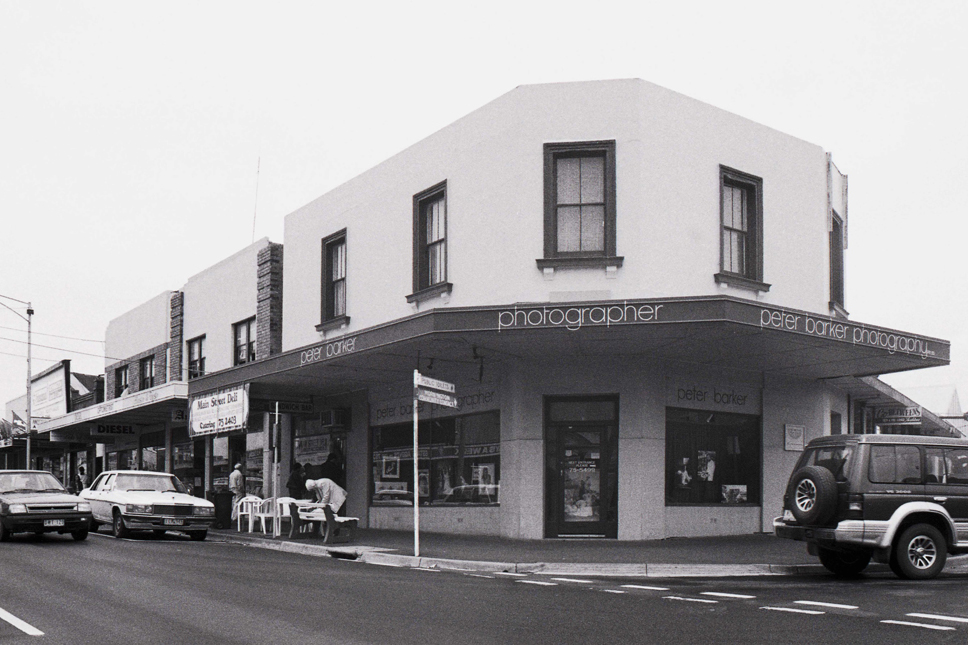
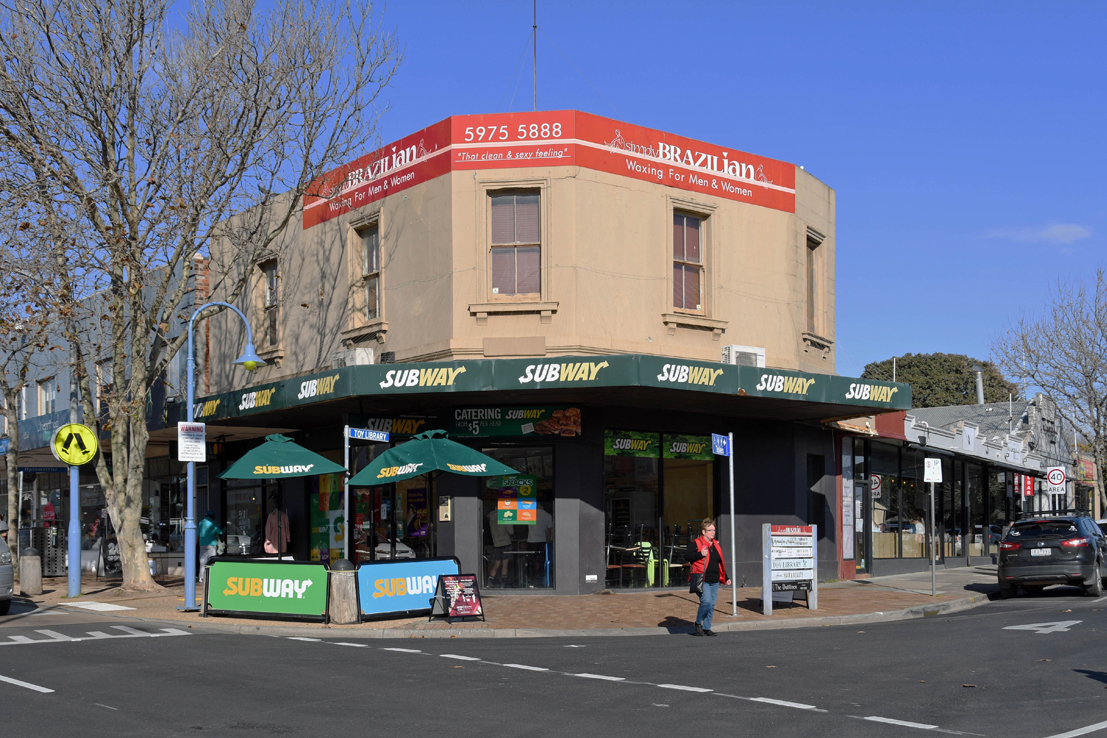
The Builder
One of the most enterprising early settlers of Mornington was Thomas Cogger Allchin who had been born in a little village named Chart Sutton in Kent, England, in 1825. He was a carpenter-builder by trade and had come to Adelaide and then made his way overland to Victoria. He commenced building operations in Schnapper Point, as Mornington was then known, and quickly established himself. He built many of the earliest commercial buildings in the town such as the original Tanti Hotel and the schoolhouse. The oldest house in Frankston, Ballam Park homestead, was built in the Gothic Revival style by Allchin in 1855 for one of the district’s early families, the Liardets. Today it is classified by the National Trust and is the home of the Frankston Historical Society which includes a museum.
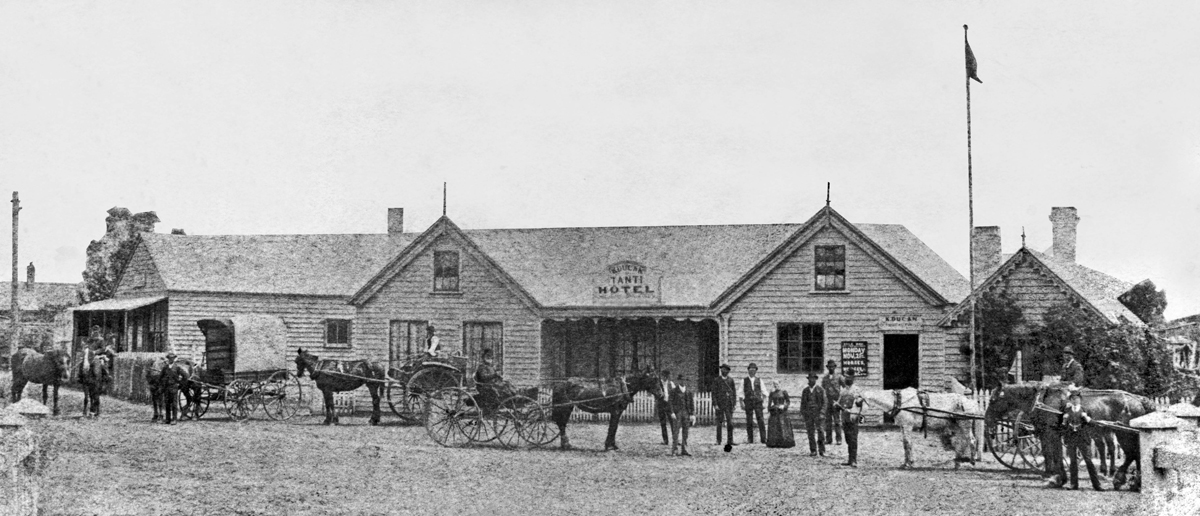
On business trips to Melbourne Thomas Allchin would frequently break the journey and stay overnight in Frankston with John Carr and his wife. There he met Sarah Jagger, Mrs Carr’s sister, who had emigrated from England in 1855. They married at St. James Old Cathedral, Melbourne, on 2 June, 1857. Like most young ladies of the time, Sarah kept a diary and, post nuptials, she recorded: “We stayed in town until Saturday evening, then came out to Cheltenham, walked to Mordialloc – next morning walked to Carrs’ at Frankston, there being no conveyance.” If Thomas was attempting to introduce a new custom – the walking honeymoon – it did not appear to catch on!
Possibly suffering a degree of exhaustion, Sarah stayed at the Carrs’ for another month or two and eventually arrived at Schnapper Point in style, dressed in her best crinoline and smart bonnet, and with her household and personal effects, behind a team of bullocks provided by Isaac Swift. These same bullocks shortly afterwards ate the linen which Sarah had brought from England and which she had drying on the line.
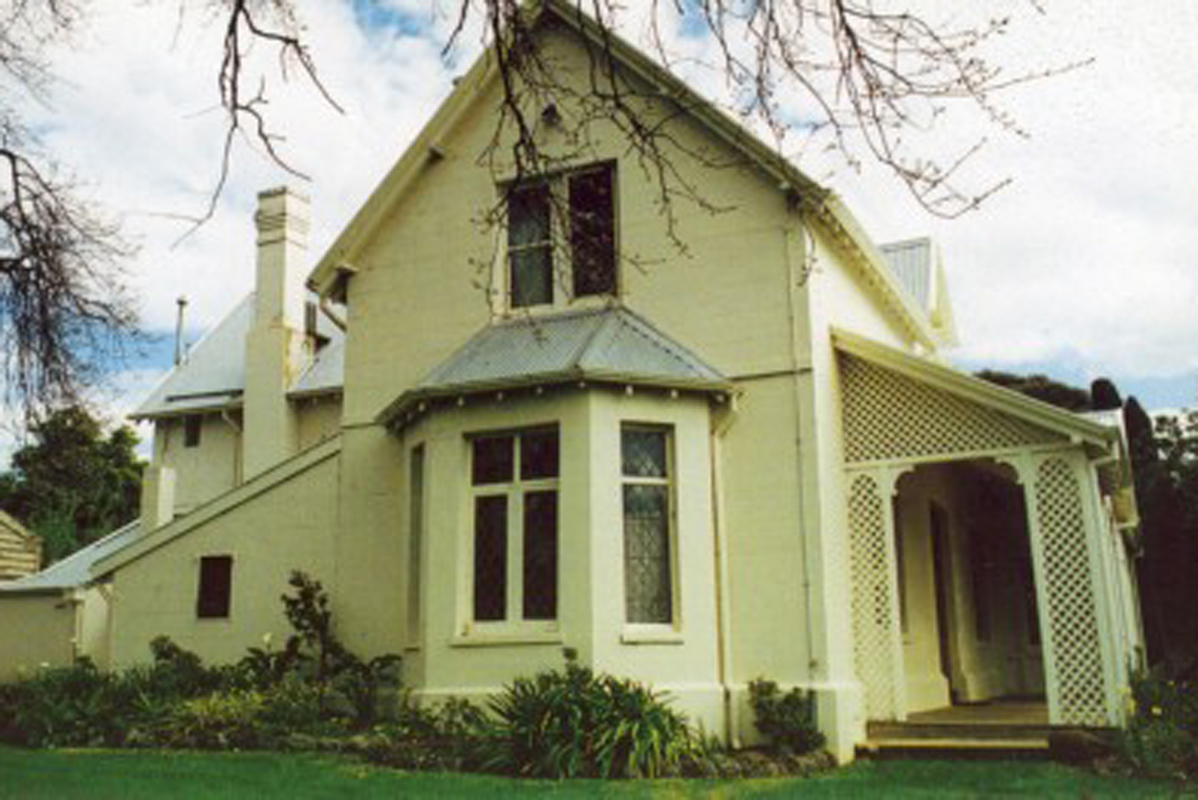
In 1859 Thomas Allchin built a general store on the corner of Main and Albert Streets which he supplied with goods which he collected in Melbourne using his boats ‘Governor Latrobe’ and ‘Maggie’. Originally it consisted of two rooms but was expanded over time to become an elegant two story building. Unfortunately it was demolished in the 1960’s. The land on the corner opposite the shop was purchased by Thomas Allchin in 1865 and it was the building which he erected on that site which housed the Oriental Bank.

About this time Thomas Allchin had a contract for supplying sleepers to the Geelong Railway line and he also had a contract to supply firewood at 17/6 per ton to the army barracks in Melbourne.
Thomas and Sarah Allchin had four children: Emmie (who married Robert Olley of the ’Clydebank’ property), Thomas, Ella (who married prominent solicitor William Sym Cook and lived in ‘Morven Manor’ in Tanti Avenue) and Charles who was born in 1872 and drowned in 1892.Thomas died on 17 November, 1901 and his wife on 9 September, 1918; both are buried in the Mornington cemetery.
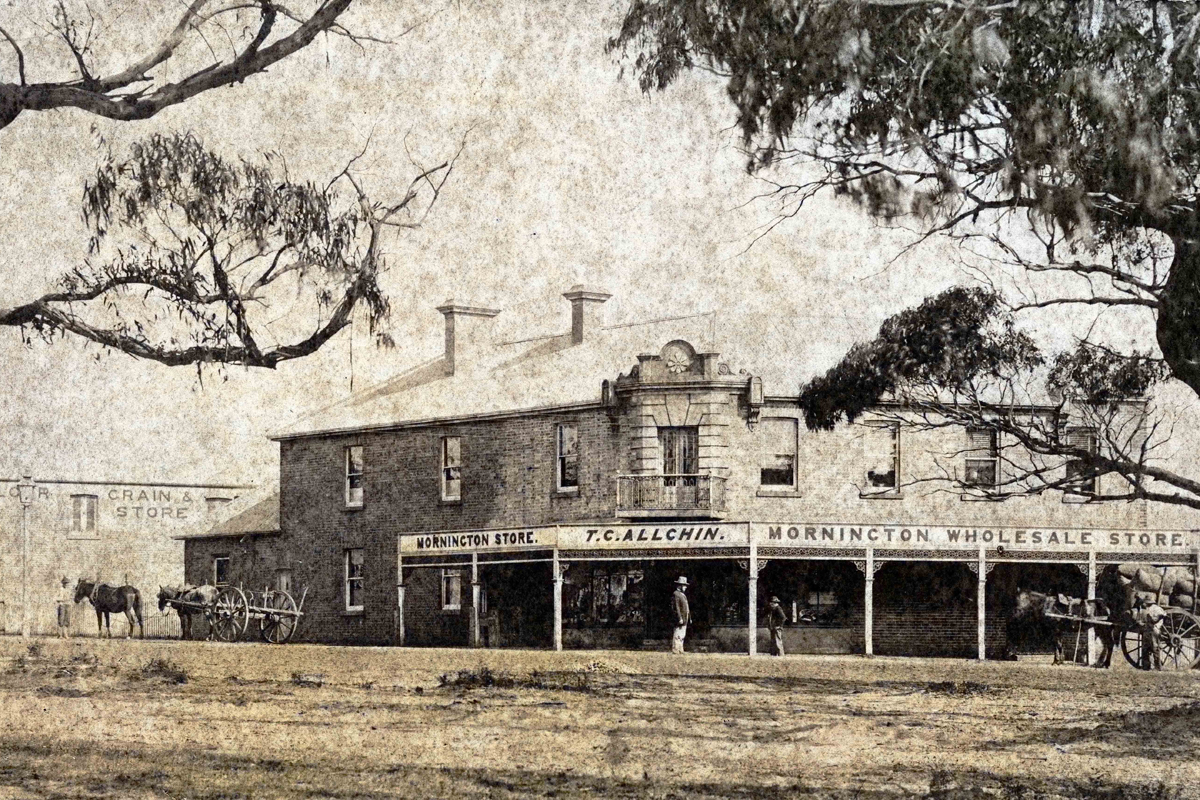
Sutton Grange
Thomas Allchin must have brought some property not long after his arrival at Schnapper Point; according to one account he bought land between Tanti Avenue and Gordon street from Isaac Swift for 20 gold sovereigns and a keg of rum! Evidently the clay pit referred to earlier was on this land and there are references to his brick making machine providing bricks for the Church of England (built in 1861) and the Presbyterian Church (1866). Records indicate the brick works was operating as late as 1896.
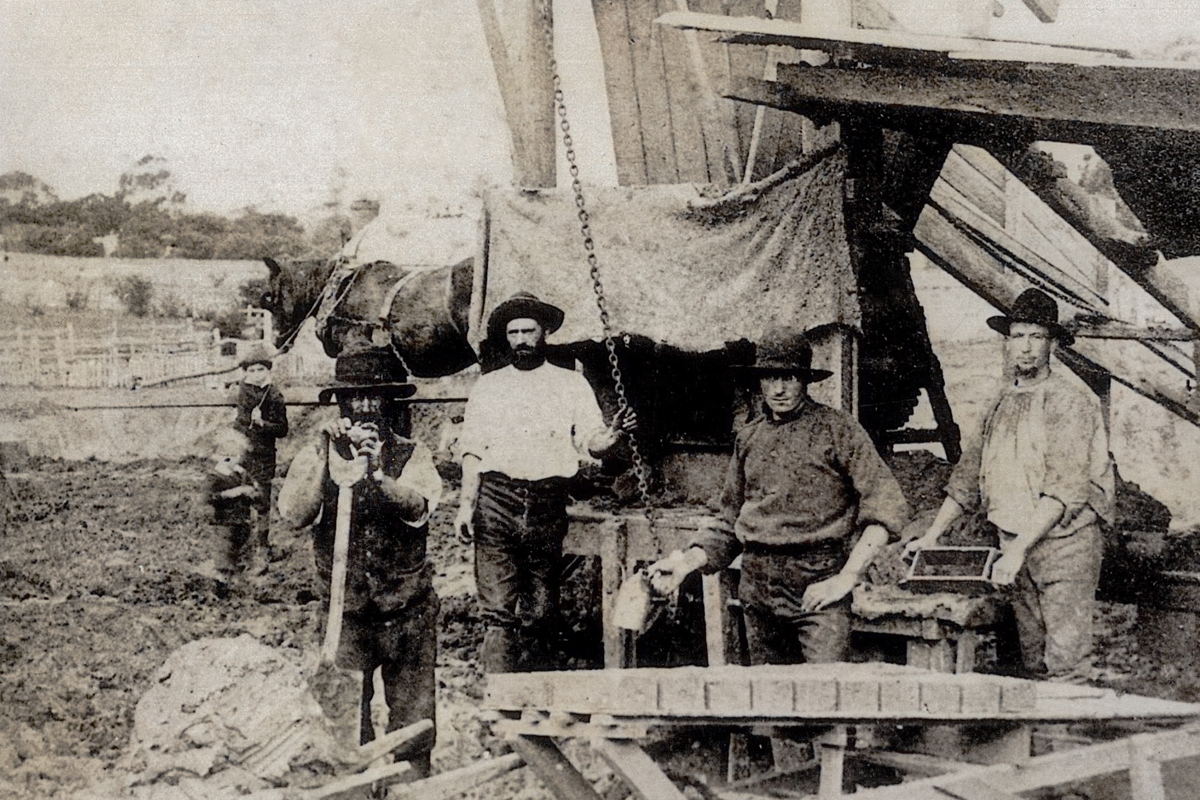
When the Allchins were married in 1857 Thomas erected a wooden house on the site where ‘Sutton Grange’, was subsequently built. A small shop was erected nearby from which Sarah sold rations and some of her needlework items. When the coach started to run to Melbourne, she would travel on it occasionally in order to replenish her stock. This little venture gave way to the establishment of the shop on the corner of Main and Albert Streets in 1859.
Official records show that on 7 November, 1872 Thomas purchased approximately six acres for £366.7.6 (aprox. $733). It had a frontage to the Esplanade and Tanti Avenue and would have been contiguous with the earlier holding. It was known as ‘the oak paddock’ because of the large number of beautiful she-oaks.
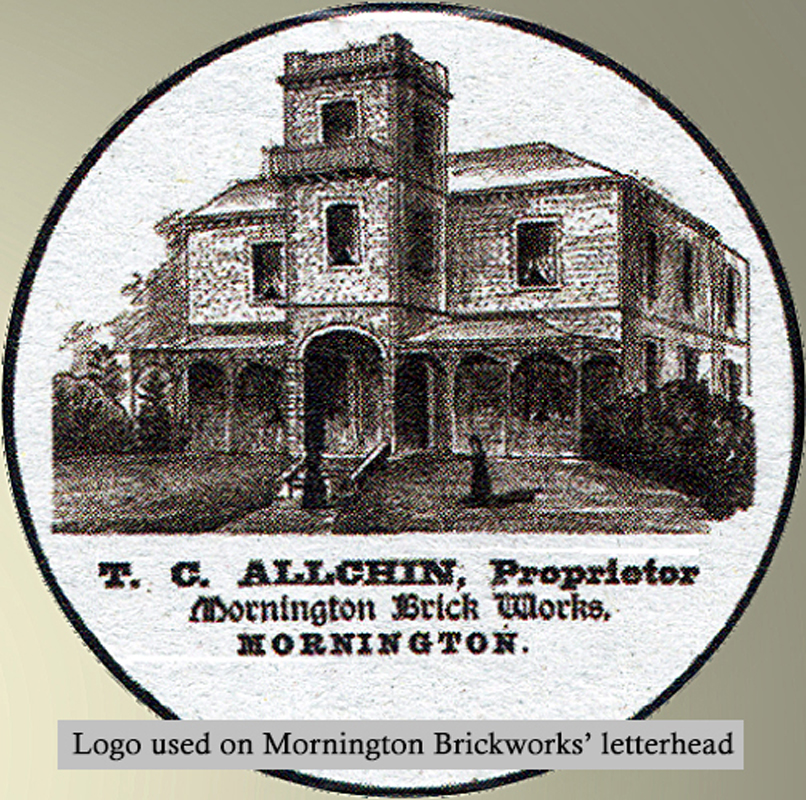
In 1877 plans were drawn up for the erection of ‘Sutton Grange’, a large two-storied residence fronting Tanti Avenue. Included was a tower which overlooked the bay and enabled Thomas to scan, through his large brass telescope, the shipping movements to and from the harbour; most of his attention would have been focused on the two boats ferrying goods for the store in Main Street. The building is distinguished by the early use of coloured face bricks which were manufactured on one corner of the property, and the balustraded three level tower.
Sarah was a very religious woman and founded a temperance organization – the Band of Hope – which she ran at ‘Sutton Grange’ for both boys and girls.
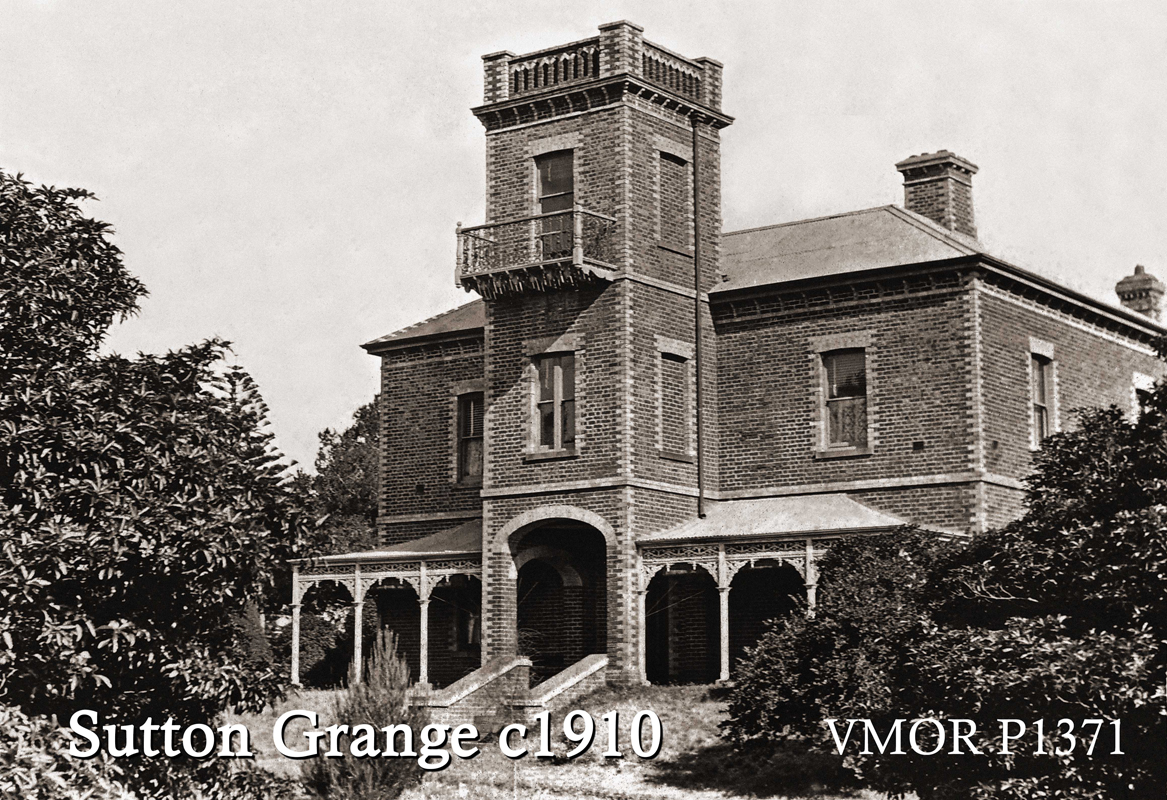
Following the deaths of Thomas and Sarah, ‘Sutton Grange’ had a number of owners and uses. Toorak merchant Harry Sargood owned it in the 1920’s, and during the 1940’s modifications were made for its use as a guesthouse. Between 1957 and 1977 Sutton Grange was owned by the Social Welfare Department of the Victorian Government which conducted a children’s home on the property. Then for a number of years it was a reception venue which hosted the weddings of a number of well-known local residents. In the early years of this century a rather unsightly addition was tacked onto one side and the property is now used for privately owned apartments.


Charles Allchin
Sunday 22 May, 1892 was undoubtedly the most tragic day in the history of Mornington: the town was mourning the loss of the bulk of the town’s football team at sea as it returned from a match at Mordialloc. During the morning the Reverend Caldwell, father of three sons who were members of the team, attempted to deliver his sermon at the Presbyterian church while, on the other side of town, Sarah Allchin watched from the balcony of ‘Sutton Grange’, hoping that the ketch ‘Process’ on which the team members were travelling, might come into view. Her son, Charles, was another member of the team. By the end of the day the wreck of the ’Process’ had been found and it was apparent that there were no survivors.
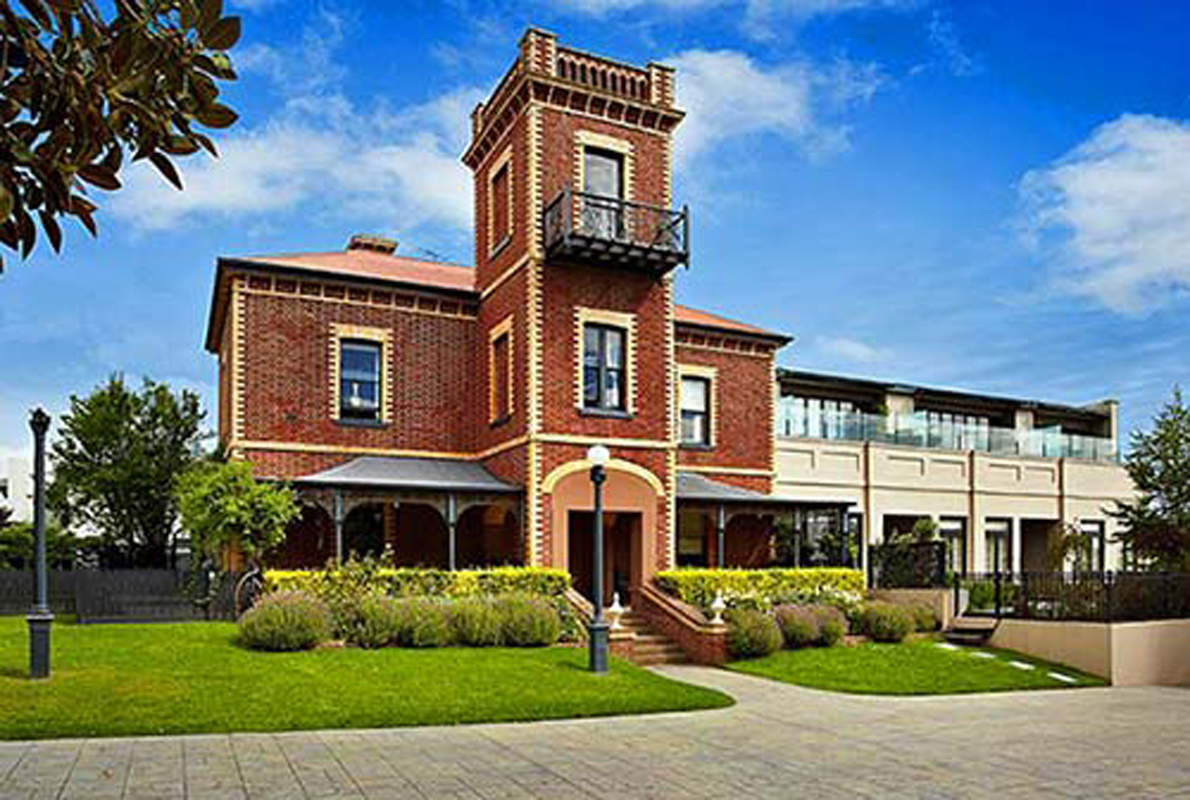
While all of the families affected by the disaster struggled to come to terms with their loss, some stories were particularly poignant. The death of Charles Allchin fell into that category. On leaving school he had commenced articles with a firm of architects and surveyors in the city. This required him to work on a Saturday morning; as soon as he was free on the morning in question he hurried down to Mordialloc as he was an enthusiastic member of the football team.
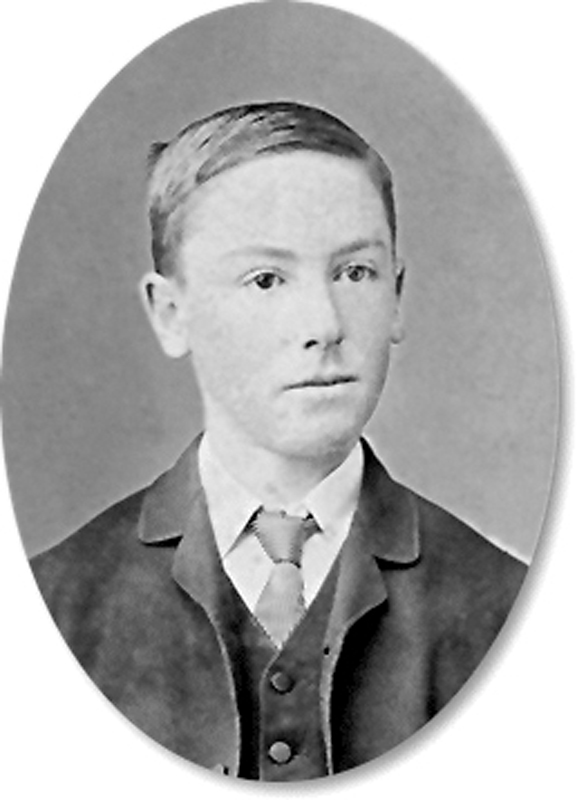
Paul Kennedy in his book ‘Fifteen Young Men’ recounts how, after the game, young Charlie walked down to the pier to say goodbye to his friends; Hooper, the skipper of the ‘Process’, did not want to take any more than the fifteen that he had brought. However Henry Short, manager of the Commercial Bank, grew impatient with the delay and started to make noises about catching the train. Charlie, standing with his bag of linen (he was bringing this home for his mother to wash as he was boarding in town during the week) saw his opportunity. He told Short that he could have his train ticket, good all the way to ’The Point’. Charlie wanted nothing more than to sail in the ’Process’ with his close friend Hugh and the other Caldwell boys, Jim and Willie. He handed the ticket to Short and took his place in the boat beside his mates.
Although some bodies were found, the remains of Charlie Allchin were not recovered. Inside the boat, however, was the bag containing his washing linen.


References:
Gordon, Malcolm H B ‘A Never Ending Journey’, Ranelagh Publishing House, 2021.
Kennedy, Paul ‘Fifteen Young Men’, William Heinemann, 2016.
Moorhead, Leslie ‘Mornington – In the Wake of Flinders’, Stockland Press, 1971.
Footnotes:
- Established in 1842 as the Bank of Western India, the bank moved its headquarters from Bombay to London in 1845, opened branches throughout the Far East, and by 1851 had changed its name to the Oriental Bank Corporation. By the 1860’s the bank held a dominant position in India and China and was considered the most powerful, oldest, and most prestigious Eastern exchange bank and the doyen of Eastern exchange banking. From the 1870’s the bank suffered greatly from bad loans and, in spite of it being reconstituted as the New Oriental Bank Corporation, it failed to survive beyond 1892.
- The Colonial Bank of Australasia was a bank operating primarily in the Australian colony and then state of Victoria from 1856 to 1918. In 1893 the bank had 69 branches across the state of Victoria and was represented interstate and overseas through agencies with a number of other banks. It was one of the banks to suspend payments during the banking crisis of 1893. The Colonial Bank amalgamated with the National Bank of Australasia in 1918.





